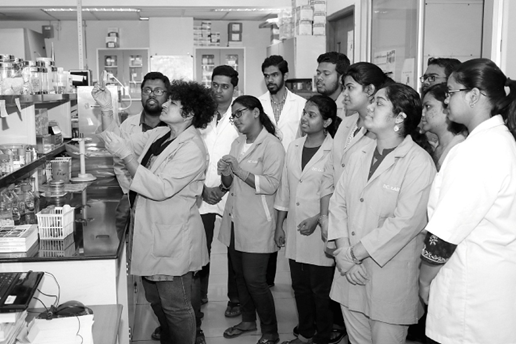Porin-dependent protection of Salmonella from the host innate immune response

Porins are bacterial outer membrane-bound barrel-shaped proteins that consist of 8-24 β-sheets and are associated with the transport of small molecules across the membrane depending upon the concentration gradient. The outer membrane of Salmonella Typhimurium, the non-typhoidal serovar of enteric pathogen Salmonella enterica and the causative agent of gastroenteritis and self-limiting diarrhoea in humans (1.3 billion cases with 3 million deaths annually, worldwide), is densely populated with several important porins such as OmpA, OmpC, OmpD, OmpF, OmpX, PhoE, and PagC.

A group of researchers led by Dipshikha Chakravortty, Professor at the Department of Microbiology and Cell Biology discovered that out of all these major porins, Salmonella Typhimurium utilizes outer membrane protein A (OmpA) as a protection shield from the innate immune response of macrophages. After engulfing, host macrophages challenge the invading pathogens with a plethora of robust innate immune machinery such as reactive nitrogen intermediates (RNI), reactive oxygen species (ROS), cationic antimicrobial peptides, etc. In a study published in PLoS Pathogens , they found that the OmpA-deleted strains of Salmonella were susceptible to the in vitro and in vivo nitrosative stress and struggled to survive inside the mouse macrophages. They showed that the outer membrane stability of Salmonella Typhimurium was severely compromised in the absence of OmpA, which reduced the ability of the bacteria to tolerate intracellular RNI.
The rapid emergence of MDR (multi-drug resistant) and XDR (extensively-drug resistant) non-typhoidal Salmonella serovars such as XDR S. Typhimurium 313 and MDR S. Typhimurium DT104 is a severe obstacle in eradicating Salmonella-induced foodborne illnesses with antibiotic therapy. The rapid adaptation of this pathogen in response to available antimicrobials necessitates detailed research on novel bacterial proteins. This study ascertained a new role of Salmonella OmpA in maintaining the outer membrane integrity/stability of the bacteria. This mechanism can be exploited to design new potent antimicrobial drugs in the near future.
REFERENCE:
Roy Chowdhury A, Sah S, Varshney U, Chakravortty D, Salmonella Typhimurium outer membrane protein A (OmpA) renders protection from nitrosative stress of macrophages by maintaining the stability of bacterial outer membrane, PLoS Pathogens (2022).
https://journals.plos.org/plospathogens/article?id=10.1371/journal.ppat.1010708
https://pubmed.ncbi.nlm.nih.gov/35969640/


Atish Roy Chowdhury, Prof Dipshikha Chakravortty

Research group of Prof Dipshikha Chakravortty, Department of Microbiology and Cell Biology, IISc
WEBSITE:
https://mcbl.iisc.ac.in/dclab/
Twitter: https://twitter.com/DipaLab_IISc








